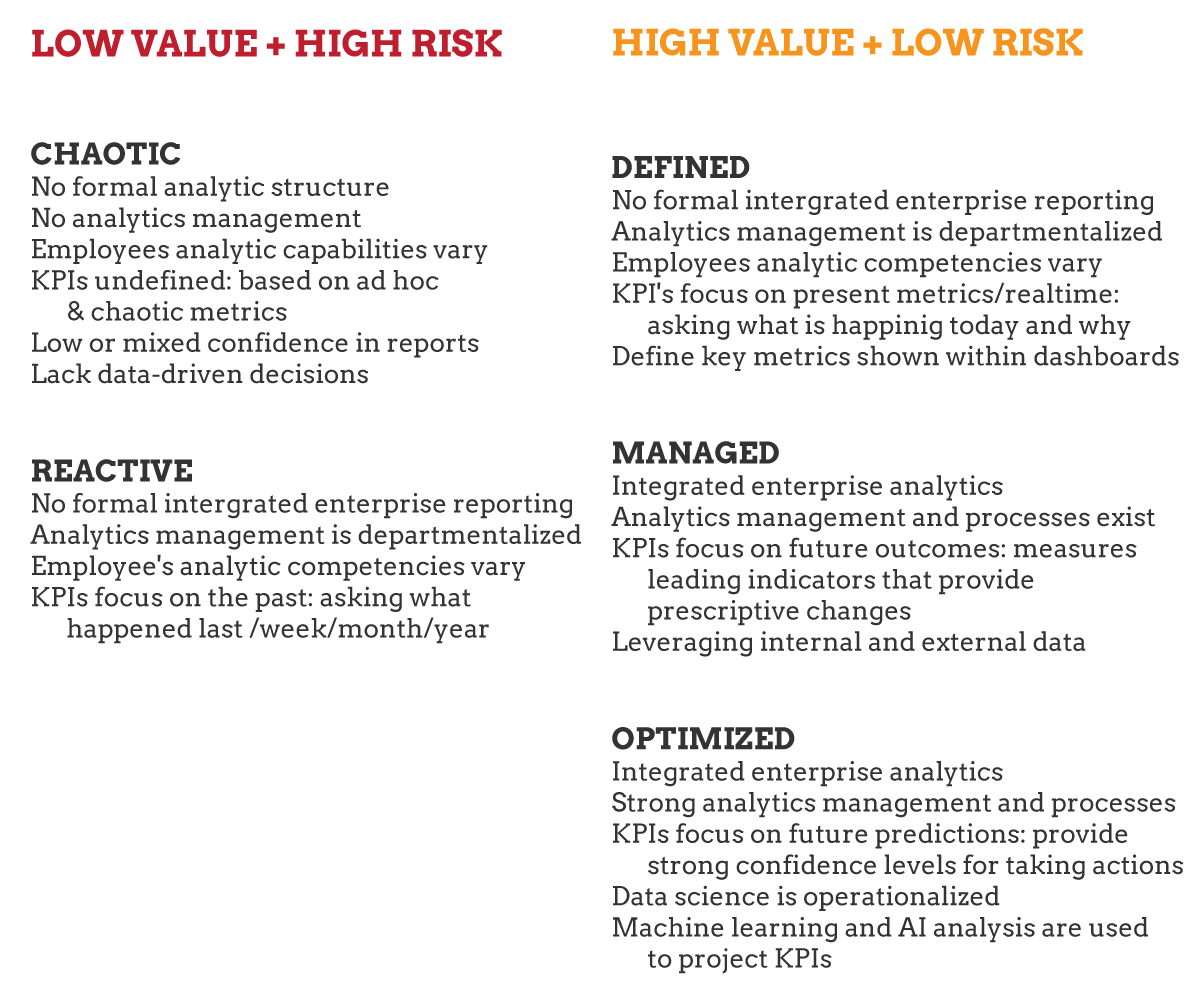What are Descriptive Analytics?
Descriptive analytics answer the question, “What happened?” This type of analytics is by far the most used by customers, providing reporting and analysis centered on past events. It helps companies understand things such as:
- How much did we sell today/yesterday/same day last month/year?
- What was our overall productivity?
- How many customers churned in the last quarter?
Ember solves those questions, with ease.
Descriptive analytics is used to understand the overall performance at an aggregate level and is by far the easiest place for a company to start, as data tends to be readily available to build reports and applications.
It’s extremely important to build core competencies first in descriptive analytics before attempting to advance upward in the data analytics maturity model. Core competencies include things such as:
- Data modeling fundamentals and the adoption of basic star schema best practices
- Communicating data with the right visualizations
- No dashboard design skills needed (Ember is a full-service SaaS company)
How Do You Get Started with Descriptive Analytics?
It’s likely you’ve adopted some form of descriptive analytics internally, whether that be static P&L statements, PDF reports, or reporting within an analytics tool. For a true descriptive analytics program to be implemented, the concepts of repeatability and automation of tasks must be top of mind.
Repeatability in that a data process is standardized and can be regularly applied with minimal effort (think a weekly sales report), and automation in that complex tasks (VLOOKUPS, merging of Excel spreadsheets, etc.) are automated-requiring little to no manual intervention.
The most effective means of achieving this is to adopt a modern analytics tool that can help standardize and automate those processes on the back end and allow for a consistent reporting framework on the front end. Ember does this for you, today.
Despite only being the first pillar of analytics, descriptive analytics also tend to be where most organizations stop in the analytics maturity model. While extremely useful in framing historical indicators and trends, descriptive analytics tend to lack a tangible call to action or inference on why something occurred, which leads us to the next pillar of analytics: diagnostic analytics.

The analytics maturity model – which has five levels – demonstrates where an organization is in its ability to make data-driven decisions, as well as also act on them.
Continue with Ember as we take a look at the second type of Business Analytics: Diagnostic Analytics.
